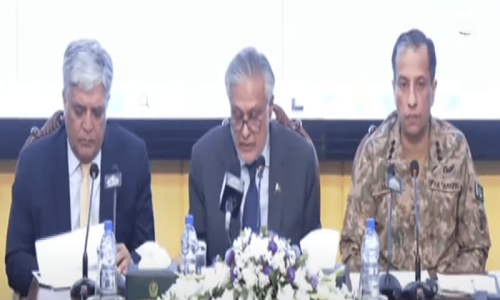
KARACHI: It was 1947. The year that Pakistan was created. Zeenat Rashid was then 18 years old.
Her father, Haji Abdullah Haroon, had passed away five years earlier. But her feisty mother, Lady Nusrat Abdullah Haroon, was a dominant figure in the Pakistan movement. And so were Lady Haroon’s children.
Zeenat’s three brothers had successively served as National Guard ADCs to Quaid-i-Azam Mohammad Ali Jinnah.
And Zeenat herself was a captain in the Women’s National Guard Movement.
“Bliss was it in that dawn to be alive. But to be young was very heaven,” she later recalled in one of her interviews.
Young Zeenat had gathered 35 high-school friends to form the caucus of Mr Jinnah’s young women contingent.
As she explained to North American filmmaker, Sadia Shepard, many years later in a film documentary,
“The Quaid-i-Azam said to us, ‘the women are standing shoulder to shoulder with the men. What are you young people doing?’” Zeenat’s answer to her hero, Mr Jinnah, was: “We’re ready — what do you want us to do?”
As Zeenat Rashid explained further, the early Sind Women’s National Guard was a small group, perhaps 25 or 30 teenagers who wore all white uniforms, learned first aid and self defence, and registered people to vote.
“We were a symbol. Jinnah wanted to show people that in Pakistan, women would do things. We didn’t cover our heads! What nonsense. We were a symbol of progress,” she told the Life magazine in an interview in 1949.
Yesterday, Zeenat Rashid passed away at age 89 in her family home ‘Seafield’ in Karachi, where Mr Jinnah had stayed, weeks at a time, several times a year, over the twelve years leading to the formation of Pakistan.
It was in her dining room at Seafield in 1947 that Zeenat, along with her sister-in-law Pasha Haroon and other family members, watched a tailor placing the new flag of Pakistan on the long table in the room centre.
Mr Jinnah inspected the flag’s white strip of cloth, meant to represent Pakistan’s minorities, and declared to the tailor that the strip should be wider.
“And you know, the tailor had to go back and make it again”.
Next morning, Mr Jinnah dominated the small family ceremony when the new Pakistan flag, suitably modified by the tailor, was hoisted on the flagpole on the Seafield rooftop.
Zeenat had clearly become a witness to the history of the making of Pakistan.
As she told author Akbar S. Ahmed for his publication, Jinnah, Pakistan, and Islamic Identity: Search for Saladin, many years later: “There was never a hint of moral or financial impropriety about the Jinnahs. They would never expect presents — indeed no one dared to give any. There was no lavish spending at government expense. On the contrary, the current joke was that when Fatima Jinnah was in charge of the Governor General’s House after the creation of Pakistan, the commercial food suppliers were in dismay and complained: she has ordered half a dozen bananas... or half a dozen oranges, because six people are to have lunch, they would moan!”
The ADCs at the Governor General’s House would ring Zeenat and declare that they wished to come over to her home, Seafield, for a good meal — because they were hungry. Such was the simplicity of the times in early Pakistan, as Zeenat Rashid reminisced.
And her grandest moment?
It was in 1947 when she was practising with the Women’s National Guard, brandishing a lathi, as any good captain training her civil defence forces would be expected to do.
Margaret Bourke-White — Mahatma Gandhi’s colleague, the famous American photographer and raconteur of the Partition movement — captured those magical moments in a rare series of images for Life magazine’s cover story on Pakistan (January, 1949). Zeenat, at the age of 18, had entered the pages of Pakistan’s iconic photographic history.
She is survived by her husband, Safdar Rashid — the son of the Lord Chief Justice of the Supreme Court of Pakistan Sir Abdur Rashid, who administered to Mr Jinnah the oath of office — and by her three children, Syra, Haider, and Samyra Rashid, and three granddaughters.
Published in Dawn, April 9th, 2017













































